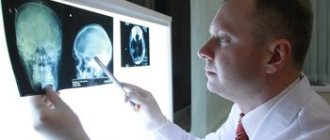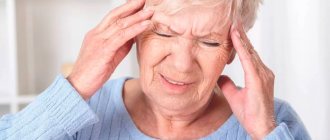Nootropics are neurometabolic stimulants that have a positive effect on complex psychophysiological processes. The mechanism of their action is associated with the restoration of the bioenergetic and metabolic functions of the neuron, as well as the neurotransmitter systems of the brain. The principle of operation of nootropic drugs, as their name suggests, is aimed at improving the functioning of the parts of the brain that are responsible for learning, memory, attention and other cognitive functions.
Nootropic drugs are drugs containing organic or synthetic active substances, as well as their derivatives, which stimulate the functioning of neurotransmitters. They are grouped into a pharmacotherapeutic group with the ATX code N06BX (“Other psychostimulants and nootropic drugs”).
The term nootropics was coined in 1972 by Romanian chemist, psychologist and Ph.D., Corneliu E. Giurgea, who first synthesized piracetam in 1964. Its therapeutic effect turned out to be the opposite of the chemist's expectations - characteristic of psychostimulants, without the occurrence of non-core actions. This effect still remains a mystery to scientists.
Nootropics used in medicine today are presented in the international drug classification system (Anatomical Therapeutic Chemical, ATC), adopted by the Ministry of Health of the Russian Federation in 2002. Other nootropic drugs are created for use within specific countries and are not introduced into the international market.
Clinical use of nootropics
Psychiatrists and psychotherapists can prescribe nootropic drugs either as monotherapy or in combination with other psychotropic drugs. For example, nootropics are prescribed for the treatment of neuroses, attention deficit hyperactivity disorder (ADHD), depressive disorders and other mood disorders, and schizophrenia.
The purpose of prescribing nootropic drugs is to restore the cognitive functions of the brain responsible for the processes of interaction with received information, in particular:
- perception (information, - approx., etc.);
- processing;
- analysis;
- memorization;
- storage;
- correlations;
- conclusions.
Nootropic drugs are also used in other areas of clinical medicine. For example, in pediatrics, where nootropics help restore amino acid deficiency that disrupts protein biosynthesis in the body and metabolic processes in general. In particular, a doctor can prescribe nootropics for children with signs of delayed speech and mental development, mental retardation, and the consequences of perinatal damage to the central nervous system. Doctors of other specializations (speech therapists, neurologists, endocrinologists, gynecologists, urologists, ophthalmologists) can prescribe nootropics depending on the symptoms, including in complex therapy, for various diseases and conditions:
- neuroleptic syndrome;
- stuttering, logoneurosis;
- hyperkinesis, dyskinesia;
- urinary disorders;
- insomnia and other sleep disorders;
- headaches of various etiologies;
- dizziness;
- seasickness;
- open-angle glaucoma;
- vascular diseases of the retina;
- macular diseases;
- diabetic retinopathy;
- Alzheimer's disease;
- Parkinson's disease;
- Huntington's disease;
- with the consequences of TBI.
In other words, the range of use of nootropic drugs is wide and is not limited only to mental disorders. The gentle therapeutic mechanism of drugs in this group allows nootropics to be prescribed to newborns and infants, as well as the elderly. It is also important that nootropic drugs are included in the List of vital and essential drugs for medical use.
Nootropics: drugs that help you think
Imagine the situation: there is an important task ahead that requires maximum concentration of mental abilities, and your brain, as luck would have it, refuses to work. Thoughts are in the clouds, your head seems wobbly, and your memory is full of holes. But there is a whole group of drugs that improve cognitive function!
Norm and pathology
First of all, it would be good to determine the cause of the violations. Memory deterioration, decreased mental performance, as well as headaches and noise in the head may be the first signs of serious diseases associated with impaired blood flow in the brain.
As a rule, this occurs when vasoconstriction occurs against the background of arterial hypertension or atherosclerosis. Both of these conditions progress without proper treatment and often lead to serious consequences such as stroke or heart attack.
In addition, mental decline may be associated with a disease such as Alzheimer's disease. Therefore, at the first alarming signs, it is better to consult a doctor and figure out what is happening in the body. If the examination confirms the pathology, the person needs long-term and serious treatment.
However, fortunately, memory impairment can also be completely harmless. After all, we often work at a high pace, sparing no effort, and stress, physical and mental overstrain make themselves felt by natural fatigue. And what kind of intellectual success can we talk about if an exhausted body directs all its efforts to ensure at least the uninterrupted operation of vital systems? This is where you can pay attention to nootropics.
"Smart" pills
The word “nootropic” was first proposed by the Romanian physiologist and chemist Cornelius Ghirge in 1972. He combined it from two Greek components: noos - mind and tropos - direction. The main goal of nootropics is to improve cognitive function.
For decades, debates have continued in world psychiatry and neurology about the advisability of using drugs in this group by healthy people. The reasons for this are the possible side effects of drugs along with unproven effectiveness. However, in 2015, global sales of this group’s products exceeded $1 billion, and demand for them is constantly growing.
According to the instructions for use, nootropics are able to accelerate the transmission of impulses between the hemispheres of the brain, normalize metabolic processes and enhance microcirculation. It is also said that nootropic drugs improve mental performance, learning and memory, and in addition increase the brain's resistance to damaging factors, such as high stress or lack of oxygen.
Today, nootropics of different classes are used in domestic practice, including:
- racetams, of which Piracetam is a prominent representative;
- derivatives of gamma-aminobutyric acid (Phenibut);
- herbal preparations such as ginkgo biloba extract;
- amino acids (Glycine);
- substances from other groups with a nootropic effect, including correctors of cerebral circulatory disorders (Vinpocetine, Cinnarizine) and general tonics (ginseng extract, melatonin).
Mechanism of action of nootropic drugs
The mechanism of action of nootropics has not been fully studied to date. However, the principle underlying the therapeutic effect, repeatedly confirmed in vivo, is still of interest to researchers in the fields of biochemistry, cytology and pharmacology. In particular, researchers know that the effectiveness of nootropics in clinical medicine is associated with several mechanisms observed at the cellular level in the central nervous system:
- enhance the synthesis of ATP and its derivatives;
- enhance the process of synaptic transmission in the central nervous system;
- enhance the plastic process in the central nervous system by increasing the synthesis of RNA and proteins;
- enhance the process of glucose utilization;
- have a membrane-stabilizing and antioxidant effect.
Thus, the mechanism of action of nootropic drugs is associated with the restoration of metabolic and bioenergetic processes in the brain, which affect a person’s mood, performance and well-being. A correctly selected nootropic will have the effects necessary for treatment, which manifest themselves over a long period of time, provided that the recommendations of the attending physician are followed (for example, regarding a rational and healthy lifestyle, attending psychotherapy sessions, taking first-line medications).
Rice. 1. Neuron
Ginkgo biloba leaves
Preparations made from the leaves of Ginkgo biloba or Ginkgo biloba contain a number of compounds that, according to the manufacturer’s description, determine the nootropic effect of the drugs by improving microcirculation, reducing platelet aggregation and preventing the formation of free radicals. Improving blood flow, including in the vessels of the brain, increases mental performance; also describe improvements in memory and learning ability.
The plant came to European medicine from traditional medicine in Asian countries, where ginkgo was used to improve memory and reduce psycho-emotional stress. Currently, preparations from ginkgo biloba are often recommended for disorders associated with cerebrovascular accidents, dizziness, and headaches (see Table 3). In addition, attempts have been made to correct sexual dysfunction in men using these drugs.
However, meta-analysis data did not reveal significant effects of Ginkgo biloba in the following categories:
- patients with dementia and cognitive impairment;
- patients who have suffered an ischemic stroke;
- patients suffering from chronic tinnitus;
- patients with age-related retinal degeneration;
- patients with pathology of peripheral arteries (intermittent claudication);
- patients with schizophrenia (preparations of ginkgo biloba as part of complex antioxidant therapy).
The effectiveness of nootropics
The effectiveness of nootropics, in particular, is explained by the therapeutic effect on the neurotransmitter systems of the brain - monoaminergic, cholinergic and glutamatergic. Nootropics help restore the regulation of the synthesis of phospholipids and proteins in neurons, normalize the structure of cell membranes; reduce the oxygen demand of neurons; suppress the formation of free radicals and lipid peroxidation of cell membranes; increase the protection of neurons to adverse factors affecting their proper functioning.
The results of biochemical blood tests and EEG, as well as laboratory experiments using modern microscopes, allow us to visualize the effectiveness of nootropics. For example, the results of an electroencephalogram can clearly see the effect of using nootropics - increased amplitudes of transcallosal evoked potentials, enhanced power spectrum of the EEG of the cortex and hippocampus, an enlarged dominant peak, smoothed interhemispheric asymmetry.
Rice. 2. Visualization of the effect of nootropics on the electroencephalogram
Monoamine neurotransmitters
Classic monoamines include: histamine, adrenaline, dopamine, norepinephrine, serotonin, melatonin. Monoamine neurotransmitters and neuromodulators act as neurotransmitters in the monoaminergic systems of the central nervous system, which regulate a variety of processes in the body, including:
- emotional condition;
- cognitive activity;
- concentration;
- ability to remember information;
- excitation processes.
Cholinergic neurotransmitters
Cholinergic neurotransmitters in the central nervous system are responsible for the processes of excitation and inhibition in the body. Neurotransmitters of this central nervous system support the autonomous functioning of internal organs and vital processes associated with the work of innervated organs and participate in the transmission of motor activity impulses. Cholinergic deficiency directly affects the imbalance of the central nervous system structures associated with it and can cause the development of:
- neurological symptoms;
- emotional-volitional pathology.
Glutamatergic neurotransmitters
Glutamatergic neurotransmitters are involved in CNS processes associated with cognitive function - they help process and store information. In addition, these neurotransmitters are responsible for motor coordination, response to pain, and the body’s immune response; are responsible for the quality of transmission of nerve impulses and the state of the nervous system as a whole.
Rice. 3. Central nervous system
Glycine
Glycine is the simplest amino acid with the structure NH2‑CH2‑COOH. In addition to the fact that glycine is part of proteins, this molecule functions as an inhibitory neurotransmitter in the central nervous system. The regulatory effect of glycine on the activity of glutamate NMDA receptors, GABAergic, alpha-adrenergic blocking, antioxidant and antitoxic effects, as well as the ability to inhibit spinal cord motor neurons are described. In this regard, the manufacturer describes such effects as:
- reduction of psycho-emotional stress and conflict;
- improved mood;
- normalization of sleep;
- increased mental performance;
- improvement of social adaptation.
It is stated that glycine reduces the severity of vegetative-vascular disorders, reduces the toxic effect of ethanol and a number of drugs on the central nervous system, and can reduce the severity of cerebral disorders and reduce increased muscle tone.
In this regard, a number of indications are indicated for glycine (see Table 3). According to the instructions for use, this nootropic is prescribed for use by hyperactive children, children with “vegetative dystonia,” and is included in “metabolic therapy” protocols for patients with connective tissue dysplasia and patients with acute ischemic stroke. Very often, patients themselves decide to “drink glycine” to improve memory or to cope with stress. You will be surprised to learn the indications for taking glycine that evidence-based medicine offers. So, according to the Cochrane Library, taking glycine:
- may partially improve the symptoms of schizophrenia when added to basic therapy;
- may have a positive effect in ischemic stroke, but this assumption requires confirmation;
- in combination with other amino acids, applied topically, can improve the healing of trophic ulcers in type 2 diabetes mellitus;
- cannot be used as a drug to improve memory, protect the liver, prevent cancer and other conditions.
The US Food and Drug Administration (FDA) has approved glycine as a 1.5% solution for urological irrigation during transurethral surgery.
Nootropics for children, adults and the elderly
Currently, clinical studies of nootropics are being conducted in the USA and Europe to identify therapeutic effects that can be used to treat diseases in various fields of medicine. It should be emphasized that we can talk about nootropics with proven effectiveness only in terms of the positive mechanism of their action, recorded by both researchers and doctors in clinical practice.
For example, on February 12, 2010, data from a clinical study on the use of nootropics in the treatment of CNS pathologies was published in the USA (Malykh A., Sadaie R. “Piracetam and piracetam-like drugs: from basic science to novel clinical applications to CNS disorders”). The study demonstrated the neuroprotective effect of the substance, effectiveness in the treatment of cognitive disorders of cerebrovascular and traumatic etiology, as well as associated depressive states. In particular, the study notes the effectiveness of nootropics as part of complex therapy in the treatment of epilepsy.
Similar and other positive effects of using nootropics are noted in many modern clinical studies, the results of which are published in scientific journals and are publicly available on the Internet. In other words, nootropics with proven effectiveness exist, they are presented on the pharmaceutical market, and are actively prescribed by doctors in various fields of medicine, but the final decoding of the therapeutic mechanism of drugs in this group has yet to be learned.
Nootropics for children
Nootropics are used in the treatment of various diseases associated with central nervous system pathology in children. In the first years of a child’s life, they can be prescribed for the prevention and treatment of delayed psycho-speech-motor development; at a later age - to stimulate the activity of the central nervous system systems responsible for concentration, the learning process, memory, and the ability to reproduce information.
Nootropics for children include drugs with dominant or predominant mnestic effects (“true” nootropics):
- racetams;
- cholinesterase drugs;
- neuropeptides and their analogues;
- amino acid activators;
- neuroprotectors;
- activators of brain metabolism;
- cerebral vasodilators;
- calcium antagonists;
- antioxidants;
- GABA activators.
Indications for prescribing nootropics for children are:
- delayed speech development;
- impaired mental function;
- cognitive impairment due to organic brain damage (consequences of neuroinfections, head injury, genetic pathology);
- mental retardation;
- ADHD;
- Parkinson's disease;
- neurogenic urination disorders;
- neurosis-like conditions;
- stuttering, predominantly clonic;
- asthenic and anxiety-neurotic conditions;
- epilepsy (in complex therapy).
Nootropics for adults
Biological therapy for mild, borderline and severe mental disorders may include nootropic drugs. They are prescribed for the occurrence of pathological conditions associated with cognitive functions, mood and sleep. For example, they have a positive effect on the psycho-emotional state and personal effectiveness as an addition to psychotherapeutic treatment, and accelerate the achievement of the desired result.
Nootropics for adults used in mono- and complex therapy of mental disorders:
- pyrrolidone derivatives (Nootropil - note, for example, and further);
- cyclic derivatives, GABA (Pantogam, Phenibut, Aminalon);
- acetylcholine precursors (Deanol);
- pyridoxine derivatives (Pyritinol);
- Devincan derivatives (Vincamine, Vinpocetine);
- neuropeptides (Vasopressin, Oxytocin, Thyroliberin, Cholecystokinin);
- antioxidants (Ionol, Mexidol, Tocopherol).
The above nootropics are prescribed for mental disorders arising from vascular diseases of the brain (F00-F09, “Organic, including symptomatic, mental disorders”):
- exogenous-organic mental disorders;
- transient psychotic disorders;
- persistent mental disorders;
- psychoorganic disorders;
- vascular dementia.
Nootropics for older people
Neuroprotective nootropic therapy for older people is prescribed for Alzheimer's disease, Pick's disease, as well as syndromes including confusion, instability of attention, confusion, disorientation in space and time, memory problems, fragmented thinking, emotional imbalance, fear, anxiety, motor agitation or lethargy, deceptions of perception, sleep disturbances.
Rice. 4. Structure of the nervous system
Nootropic drugs in modern medicine
Nootropic drugs can improve cognitive (cognitive) functions both in people suffering from various brain diseases and in healthy people. At the same time, they do not cause psychomotor agitation, depletion of the body’s functional capabilities, or addiction. The term “nootropics” (from the Greek words “noos” - thinking and “tropos” - striving) was adopted in 1972, two years after the appearance of the drug piracetam on the world market [1]. Although there is no generally accepted classification of nootropics yet, these drugs include: • piracetam, its homologues and analogues (aniracetam, oxiracetam, pramiracetam, nefiracetam, etc.); • dimethylaminoethanol derivatives: deanol aceglumate, meclofenoxate, centrophenoxine; • neuroamino acid preparations: gamma-aminobutyric acid (GABA), gamma-aminobutyric acid derivatives (phenibut, nicotinoyl-gamma-aminobutyric acid (picamilon), hopantenic acid (pantogam), glycine, glutamic acid; • pyridoxine derivatives: pyritinol (pyriditol, enerbol , encephabol); • centrally acting cholinomimetic: choline alfoscerate; • Ginkgo biloba preparations: bilobil, memoplant, tanakan, etc.; • compounds of other chemical structures, belonging to various classes and groups of chemical substances, similar in mechanism of action to piracetam and having the ability facilitate learning processes and improve memory. Along with true nootropic drugs (with a dominant effect on mnestic functions), various authors classify drugs with a wide range of effects as nootropic drugs [2]: • drugs that increase cerebral circulation, microcirculation and metabolism: vinpocetine, vincamine , vinconate, nicergoline, cinnarizine, flunarizine, nimodipine, xanthine derivatives of pentoxifylline, carnitine, phosphatidylserine, sodium oxybate; vitamins and their derivatives: pantothenic acid, folic acid, vitamin E; • intermediate products of cell metabolism: orotic and succinic acids; • combination drugs: instenon, omarone. Piracetam became the founder of the class of nootropic drugs. It was synthesized in 1963 by UCB as an antikinetic agent. Studying the effects of piracetam allowed the chief researcher of UCB K. Giurgea already in 1972 to formulate the basic properties of a new class of drugs - nootropics. The pharmacological effects of nootropics consist of metabolic and neurotrophic effects, which, in turn, determine the processes of improving redox reactions, reducing the aggressive effect of lipid peroxidation (LPO) products, and a positive effect on neurotransmission. In addition, these drugs have a vasoactive and mild antiplatelet effect. The main mechanisms of action of nootropic drugs include: • accelerating the penetration of glucose through the blood-brain barrier and increasing its absorption by brain cells, especially in the cerebral cortex; • increased conduction of cholinergic impulses in the central nervous system (CNS); • stabilization of cell membranes (increased synthesis of phospholipids and proteins in neurons and red blood cells); • inhibition of lysosomal enzymes; • activation of cerebral microcirculation by improving the deformability of erythrocytes and preventing platelet aggregation; • improvement of cortical-subcortical interaction; • normalization of neurotransmitter disorders; • activating effect on higher mental functions (memory, learning ability, etc.); • improvement of reparative processes in case of brain damage of various origins [3,4]. Piracetam has a chemical structure similar to GABA and is sometimes considered a derivative of this amino acid, but it is not converted into GABA in the body and its content in the brain does not increase after using piracetam. Despite 50 years of use in clinical practice, the exact mechanism of action of piracetam and nootropics in general has not yet been established. Most researchers suggest that piracetam exerts its main action through ion channels or ion transport subunits, resulting in a nonspecific increase in neuronal excitability. At the same time, the lack of agonistic or inhibitory effects on most neurotransmitters explains the low toxicity of piracetam. One theory that explains many of the effects of piracetam is the membrane theory. Several studies have demonstrated that membrane fluidity decreases with age. This entails a deterioration in membrane-related processes: the interaction of enzymes, receptors and functions. Piracetam can restore this process [5]. On the other hand, there is a positive effect of piracetam on glucose utilization, as well as ATP production [6]. Piracetam has a beneficial effect in situations related to impaired brain function in conditions such as aging, hypoxia, trauma, and neurodegenerative processes. In all these situations, mitochondrial dysfunction is detected. Impaired mitochondrial function and decreased respiratory chain activity lead to decreased ATP levels, glucose consumption and, finally, neuronal dysfunction and cell apoptosis [7,8]. It has been shown that piracetam can improve mitochondrial function and stabilize the mitochondrial membrane in situations of increased risk of damage. This is confirmed by studies using specific fluorescent dyes to monitor mitochondrial membrane potential [9]. Thus, protection against mitochondrial dysfunction, increased ATP production, and prevention of apoptosis may be important effects of the beneficial effects of piracetam on aging and neurodegeneration (since mitochondrial dysfunction and decreased energy metabolism are early processes in Alzheimer's disease) [10]. Piracetam has neuroprotective, antithrombotic and rheological positive effects. The interaction of its molecule with phospholipids of membranes and restoration of the fluidity of cell membranes explains the effectiveness of piracetam in an extremely wide range of diseases. Piracetam is used in many countries to treat cognitive impairment in aging, brain injury, and dementia [11]. Although its clinical effectiveness is still a matter of debate, meta-analysis of clinical trials using piracetam provides convincing evidence of the effectiveness of this drug in elderly patients with cognitive impairment [12]. A distinctive feature of piracetam is its low toxicity. In clinical practice, piracetam is often combined with various drugs. Many clinical studies demonstrate its synergistic effect with anticonvulsants, especially carbamazepine. This combination can enhance the antiepileptic effect and neutralize the deterioration of cognitive functions induced by anticonvulsants. Combination with various vitamin complexes helps enhance the metabolic effect of piracetam. Finally, practical neurologists often combine piracetam with vasoactive drugs, thereby enhancing both nootropic and vascular effects. The most successful is the combination of piracetam with cinnarizine. Cinnarizine is an antihistamine first synthesized in 1955 as a treatment for motion sickness and Meniere's disease. Further research has shown that cinnarizine can also be considered as a nootropic agent, since its vasoactive effect (due to calcium channel blockade) is mainly realized in the brain. Cinnarizine, by disrupting the flow of calcium ions into vascular smooth muscle cells, reduces the tone of the smooth muscles of arterioles and increases tissue resistance to hypoxia. The vasodilatory effect of cinnarizine is not accompanied by a significant effect on systemic blood pressure. In addition to the vasodilating effect, cinnarizine reduces blood viscosity by increasing the elasticity of red blood cell membranes and their ability to deform. The spectrum of side effects of cinnarizine includes gastrointestinal symptoms (diarrhea, constipation, nausea, vomiting, abdominal pain), headache, dry mouth, sweating. The severity of side effects is moderate, they are transient and, as a rule, do not require discontinuation of the drug. With long-term use of cinnarizine, disorders of the extrapyramidal system can very rarely occur. Epidemiological studies show that the risk of extrapyramidal side effects becomes significant with continuous use of cinnarizine for more than 4–6 months. at a dose of over 75 mg/day. in persons over 70 years of age [13]. If movement disorders occur, the drug containing cinnarizine must be immediately discontinued. Cinnarizine in its pure form and as part of combination drugs should not be prescribed to patients suffering from Parkinson's disease or having parkinsonism syndrome. The combination of piracetam with cinnarizine increases the supply of oxygen to the brain. Currently, there are official drugs containing piracetam and cinnarizine in one tablet. One of these drugs is Omaron®, containing 400 mg of piracetam and 25 mg of cinnarizine. The range of indications for Omaron® includes primarily cerebrovascular diseases, including vascular dementia, as well as encephalopathies of various origins, diseases of the central nervous system, accompanied by a decrease in intellectual and mental functions. In case of cerebrovascular disease (dyscirculatory encephalopathy), Omaron® acts on two main links in pathogenesis: improves cerebral perfusion and has a beneficial effect on cerebral metabolism. The mechanism of action of the component cinnarizine included in Omaron® allows the drug to be used for the prevention of migraine attacks. Calcium channel blockers have long been used to prevent migraines. Omaron® has been shown to be highly effective in treating chronic and acute ischemic brain lesions. Thus, in a controlled study (comparison drug - vinpocetine), which included patients with dyscirculatory encephalopathy, a decrease in the frequency of complaints of memory impairment, headache, dizziness, and decreased performance after 14 days of therapy with Omaron® was demonstrated by an average of 40%, and after 28 days - on average by 70%. This particularly affected dyssomnic disorders, which may be associated with the sedative effect of cinnarizine. The results were comparable to those in patients in the control group, and were superior in some respects (headaches, dizziness, staggering when walking). Positive dynamics were noted according to ultrasound data of the main arteries of the head and neck, and electroencephalographic study of the bioelectrical activity of the brain [14]. The use of Omaron® in complex therapy of ischemic stroke can significantly reduce neurological deficit (according to the Lyons scale) by 46% in the main group. In the comparison group, whose patients did not receive nootropic drugs, the same figure decreased by 27%. Significant differences were also recorded in the assessment of cognitive function (MMSE), emotional-volitional sphere (HADS scale) compared with the initial data and indicators of the control group [15]. In a controlled study assessing the effectiveness of Omaron® in patients with post-stroke cognitive impairment, repeated examinations in the main group and in the comparison group revealed a significant (p<0.05) improvement in cognitive function indicators according to neuropsychological examination. This improvement was noted after 1 month. treatment, but was more significant after 2 months. After 1 and 2 months. treatment significantly (p<0.05) established higher rates of cognitive function on some neuropsychological tests. In particular, the results of the 5-word memorization test in the main group increased from 8.20±1.53 points before treatment to 8.89±1.3 points after 1 month. treatment and up to 9.31±0.97 points after 2 months. treatment. The Mini-Mental State Examination (MMSE) and the Frontal Abnormality Assessment (FAB) scale also showed significant improvement in the Omaron® treatment group. In 2 months Observations in both groups of patients showed a significant improvement in neurological status indicators and a decrease in the degree of disability (according to the Rankin, Barthel, NIH-NINDS scales). In the main group, there was a tendency (p>0.05) towards a more significant restoration of neurological functions and a decrease in the degree of disability compared to the control group [16]. Omaron® dosage regimen: 1-2 tablets 3 times a day. within 6–12 weeks. The drug is well tolerated, and the safety of its components has been tested for a long time. Thus, Omaron® is a successful combination of agents with different mechanisms of action, allowing the practitioner to effectively and safely help his patients. Literature 1. Voronina T.A., Seredenin S.B. Nootropic drugs, achievements and new problems // Experimental and clinical pharmacology. – 1998. – No. 4. – P. 3–9. 2. Kovalev G.V. Nootropic drugs. – Volgograd: Nizh.-Volzh. book publishing house, 1990. – 368 p. 3. Vorobyova O.V. Nootropic drugs – new possibilities of known drugs // Consilium Medicum (Rheumatology and Neurology). – 2008. – T. 10, No. 2. – P. 7–11. 4. Putilina M.V. Modern ideas about nootropic drugs. Attending Physician: Journal for a practicing physician, 2006, No. 5, pp. 10–14. 5. Muller WE, Koch S., Scheuer K., Rostock A., Bartsch R. Effects of piracetam on membrane fluidity in the aged mouse, rat, and human brain // Biochem. Pharmacol. 1997;53:135–140. 6. Heiss WD, Hebold I., Klinkhammer P., Ziffling P., Szelies B., Pawlik G., Herholz K. Effect of piracetam on cerebral glucose metabolism in Alzheimer's disease as measured by positron emission tomography // J. Cereb. Blood Flow Metab. 1988;8:613–617. 7. Gabryel B., Adamek M., Pudelko A., Malecki A., Trzeciak HI Piracetam and vinpocetine exert cytoprotective activity and prevent apoptosis of astrocytes in vitro in hypoxia and reoxygenation // Neurotoxicology. 2002;23:19–31. 8. Pelsman A., Hoyo–Vadillo C., Gudasheva TA, Seredenin SB GVS–111 prevents oxidative damage and apoptosis in normal and Down’s syndrome human cortical neurons // Int. J.Dev. Neurosci. 2003;21:117–124. 9. Muller WE, Eckert GP, Eckert A. Piracetam: novelty in a unique mode of action // Pharmacopsychiatry. 1999;32(Suppl 1):2–9. 10. Keil U., Bonert A., Marques CA, Scherping I. et all. Amyloid beta–induced changes in nitric oxide production and mitochondrial activity leading to apoptosis // J. Biol. Chem. 2004;279–285. 11. Croisile B., Trillet M., Fondarai J. et al. Long-term and high-dose piracetam treatment of Alzheimer's disease // Neurology. 1993;43:301–305. 12. Waegemans T., Wilsher CR, Danniau A., Ferris SH, Kurz A., Winblad B. Clinical efficacy of piracetam in cognitive impairment: a meta-analysis // Dement. Geriatr. Cogn. Discord. 2002;13:217–224. 13. Fabiani G., Pastro PC, Froehner C. Parkinsonism and other movement disorders in outpatients in chronic use of cinnarizine and flunarizine // Arq Neuro-Psiquiatr 2004; 62 (3): 1590. 14. Lobzin S.V., Bodrova T.V., Vasilenko A.V. Experience of using the drug Omaron in the treatment of dyscirculatory encephalopathy with intermittent vertebrobasilar insufficiency // Journal of Neurology and Psychiatry named after. S.S. Korsakov. 2009. – I. /. – P. 40–43. 15. Smirnova I.M., Lazukina I.A., Karelina N.I., Polikutina O.M., Bazueva N.S., Nekhorosheva A.N. Possibilities of using the combined drug Omaron in patients with ischemic stroke associated with arterial hypertension and atherosclerotic stenosis of the carotid arteries // RMJ. – 2009. – T. 17, No. 6. 16. Parfenov V.A., Bellavina G.R., Vakhnina N.V., Gusev V.V., Levin Ya.I., Markin S.P., Starchina Yu.A. The use of Omaron in patients with post-stroke cognitive disorders // Journal of Neurology and Psychiatry named after. S.S. Korsakov. – 2009. – No. 6.
List of nootropic drugs
Nootropic drugs for the brain can be found in the international Anatomical-Therapeutic-Chemical Classification of Medicines. The list of nootropics in the subsection “Other psychostimulants and nootropic drugs” (N06BX), which is included in the section “Psychostimulants, drugs used for attention deficit hyperactivity disorder, and nootropic drugs” (N06B), contains:
- Meclofenoxate;
- Pyritinol;
- Piracetam;
- Deanol;
- Fipexide;
- Citicoline;
- Oxiracetam;
- Pirisudanol;
- Linopyrdine;
- Nisophenone;
- Aniracetam;
- Acetylcarnitine;
- Idebenone;
- Prolintane;
- Pipradrol;
- Pramiracetam;
- Adrafinil;
- Vinpocetine;
- Mebicar;
- Phenibut.
The list of nootropics does not end with the names above. On the domestic pharmaceutical markets there are other derivatives, synthetic analogues and drugs that have the properties of nootropics, but are not such. It should be noted that recently there has been a fashion for precisely these “latest generation nootropics” - dietary supplements that can be purchased without a prescription. As a rule, they are complexes of vitamins and substances of plant origin.
In the strict sense of the word, it is not possible to talk about the latest generation of nootropics. It should be understood here that the first nootropic, by definition, was piracetam. Racetams, which have variations in formula and therapeutic effect, and drugs with nootropic properties are still being developed by pharmaceutical companies. Some of them are prohibited in the United States and, in particular, are classified as new psychoactive substances (NPS) in several European countries.
The main representatives of nootropic drugs
1. Piracetam (Lucetam, Nootropil) is one of the first drugs in this group. It is produced both separately in the form of tablets, capsules, solutions for parenteral administration, and in combination with other neuroprotective substances. For example, Phezam - a combination with cinarrizin (a drug to improve cerebral circulation), or with orate acid - Oracetam. The duration of treatment is from 6 to 8 weeks.
In adults, start with a dosage of 200 to 800 mg per day in several doses. Most often, if the patient’s health allows, it is administered orally in the form of capsules or tablets. In particularly severe conditions, parenteral administration is possible. When the desired effect is achieved, it is recommended to continue treatment with dosages of 400 to 600 mg per day, and with parenteral administration, over time, switch to oral administration.
In the instructions, the manufacturer warns of possible sleep disturbances if taken late in the evening. It is important to pay attention to the fact that people with chronic renal failure should treat piracetam with caution, because it is excreted only by the kidneys.
Also not very common, but a serious side effect is its antiplatelet effect, which can lead to bleeding in people who have recently undergone surgery, hemorrhagic stroke or patients with stomach ulcers.
Photo: Nootropics allow a person to recover and get back on track.
2. Phenotropil is a drug similar in its effect and mechanism of action to piracetam. Its feature is a more pronounced activating effect at the beginning of use. It does not have forms for parenteral administration and is only available in tablets.
The dosage regimen is selected individually, the average daily dose is 200-300 mg, which must be taken in 2 doses.
3. Hopatenic acid (pantogam, pantocalcin) is recommended as a component of the complex treatment of neuroses, psychopathic conditions with severe agitation. Unlike piracetam and phenotropil, it has a sedative effect and does not increase the risk of another seizure in epilepsy. Available in the form of tablets and syrup for oral administration. The course of treatment is usually from 1 to 3 months, and the average daily dose is from 0.75 to 3 grams.
4. Phenibut - a drug consisting of aminophenylbutyric acid, is used for disorders of the cerebral cortex, as well as for dizziness associated with dysfunction of the vestibular apparatus, anxiety disorders. Has a slight sedative effect.
5. Cinarrizin – refers to drugs that improve blood supply to the brain. It is the drug of choice for chronic cerebral ischemia.
6. Memantine (noogerone, alzeim) is one of the important drugs for the treatment of neurodegenerative diseases, in particular Alzheimer’s disease and dementia of the Alzheimer’s type. The optimal daily dose is 30 mg, but start taking it with a dosage of 5-10 mg and increase it over the course of a month.
List of used literature
1. Klitochenko G.V., Malyuzhinskaya N.V. "The use of nootropic drugs in pediatrics."
2. Pichikov A.A., Popov Yu.V. "Anorexia nervosa in adolescent girls: course options, relapse factors and suicidal risk in the early stages of treatment."
3. Davydova O.N., Boldyrev A.A. "Glutamate receptors in cells of the nervous and immune systems."
4. Vostrikov V.V. "The place of piracetam in modern practical medicine."
5. Shabalov N.P., Skoromets A.A., Shumilina A.P. “Nootropic and neuroprotective drugs in pediatric neurological practice.”
6. Malykh A., Sadaie R. “Piracetam and piracetam-like drugs: from basic science to novel clinical applications to CNS disorders.”
7. Calliauw L., Marchau M. “Clinical trial of piracetam in disorders of consciousness due to head injury.”
8. Rybak V.A., Matokhina N.V. “Nootropic drugs in the clinical practice of a neurologist.”
Share
Share
Cost of treatment in our clinic
| Service | Price | |
| Ambulatory treatment | ||
| Psychiatrist consultation | 4 500 ₽ | |
| Consultation with a psychotherapist | 4 500 ₽ | |
| Psychodiagnostics extended | 7 000 ₽ | |
| Consultation with a psychiatrist at home | 6 000 ₽ | |
| Treatment in hospital | ||
| Delivery to hospital | For free | |
| Standard room | 7 700 ₽ | |
| 3-bed superior room | 10 600 ₽ | |
| 2-bed superior room | 13 700 ₽ | |
| 1 local VIP chamber | 19 000 ₽ | |
| Doctor's appointment 2 weeks after discharge | For free | |









